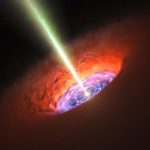Key Takeaways:
- Scientists achieved a “quantum time flip” where a light particle appears to move forward and backward in time simultaneously.
- This was achieved using two quantum mechanics concepts: superposition (existing in multiple states) and CPT symmetry (laws hold even for reversed particles).
- The experiment involved splitting a photon, manipulating its polarization, and recombining it to show a specific interference pattern.
- This breakthrough could lead to advancements in quantum computing and our understanding of quantum gravity.
- The findings are not yet peer-reviewed but hold promise for further exploration of quantum mechanics.
Scientists have, for the first time ever, made light appear to move simultaneously forward and backward in time.
According to a LiveScience report, the new approach, developed by a global team of scientists, may contribute to the development of novel quantum computing methods and advance our understanding of quantum gravity.
It was made possible by the combination of two concepts from the strange the world of quantum mechanics.
What is a “quantum time flip”?
Two independent teams of scientists conducted their experiments side by side and achieved what they describe as a “quantum time flip”, in which a photon exists both in forward and backward time states at the same time.
This was essentially made possible by the convergence of charge, parity, and time-reversal (CPT) symmetry and quantum superposition, which are concepts in quantum mechanics that describe the physical characteristics of atoms and subatomic particles.
The former, quantum superposition, is a phenomenon that sees tiny particles exist in several different states until they are observed, while the latter, CPT, is a principle that states any system containing particles will obey the same physical laws, even if their charge, spatial coordinates, and movements are precisely reversed.
Superposition is famously described by the thought experiment Schrödinger’s cat, in which a hypothetical cat is considered simultaneously alive and dead due to the fact that its life is in the hands of a random subatomic event that both takes place and doesn’t take place until it’s observed.
The twin experiment results, which have not yet undergone peer review, were published by each team.
The development of a unified theory of quantum gravity may benefit from new experiments.
The scientists used superposition to enable a photon, a type of light particle, to move both forward and backward in time during their experiments.
In order to accomplish this, each group splits a photon through a crystal along a superposition of two different paths. Another route was developed to change the photon’s polarization, or where it points in space, so that it appeared to be moving backward in time, even though the superposed photon moved through the crystal in a regular manner.
The scientists then recombined the superposed photons by making them move through another crystal. After that, they detected a quantum interference pattern by measuring the photon polarization. Only if the photon were traveling in both directions could this pattern, which consists of stripes that are both light and dark, be created.
Their research demonstrated that time flips could be connected to reversible logic gates to enable simultaneous computation in both directions, which could lead to more advanced processing in quantum computing. The research could aid in the search for a unified theory of quantum gravity that combines the ideas of quantum mechanics and general theory of relativity. It also advances the scientific community’s understanding of the field of quantum mechanics.


